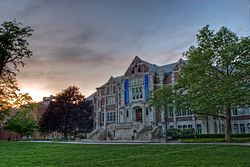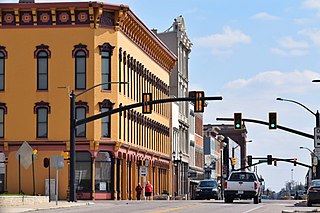
Muncie is an incorporated city and the seat of Delaware County, Indiana, United States. Previously known as Buckongahelas Town, named after the prominent Delaware Chief, it is located in East Central Indiana, about 50 miles (80 km) northeast of Indianapolis. At the 2020 United States Census, the city's population was 65,195, down from 70,085 in the 2010 Census. It is the principal city of the Muncie Metropolitan Statistical Area, which encompasses all of Delaware County. The city is also included in the Indianapolis–Carmel–Muncie, IN Combined Statistical Area.

Daniel Chester French was an American sculptor of the late nineteenth and early twentieth centuries. He is best known for his 1874 sculpture The Minute Man in Concord, Massachusetts, and his 1920 monumental statue of Abraham Lincoln in the Lincoln Memorial in Washington, D.C.

Ball State University is a public research university in Muncie, Indiana. It has two satellite facilities in Fishers and Indianapolis.

The Sidney and Lois Eskenazi Museum of Art at Indiana University is an art museum at Indiana University Bloomington, which opened in 1941 as the Indiana University Museum of Art under the direction of Henry Radford Hope. The museum was intended to be the center of a “cultural crossroads,” an idea brought forth by then-Indiana University President Herman B Wells. The present museum building was designed by I.M. Pei and Partners and dedicated in 1982. The museum's collection comprises approximately 45,000 objects, with about 1,400 on display. The collection includes items ranging from ancient jewelry to paintings by Pablo Picasso and Jackson Pollock. In May 2016, after the announcement of the largest cash gift in the museum's history, the museum was renamed the Sidney and Lois Eskenazi Museum of Art in honor of Indianapolis-based philanthropists Sidney and Lois Eskenazi. The museum is located on the Indiana University Bloomington campus at 1133 E. Seventh Street.
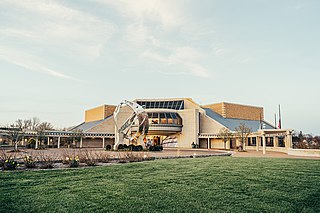
Minnetrista Museum & Gardens was founded in 1988. Built on the legacy of the Ball family and company, Minnetrista is a 40-acre museum and garden site located on the White River in Muncie, Indiana. The organization presents exhibits, nature trails, educational programs, and community events.

WCRD is a non-commercial radio station operated by students of Ball State University in Muncie, Indiana. The station is operated out of the David Letterman Communication and Media Building on the Ball State University campus.
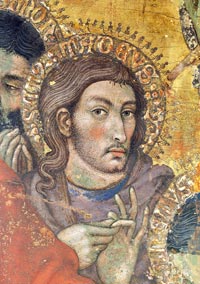
Taddeo di Bartolo, also known as Taddeo Bartoli, was an Italian painter of the Sienese School during the early Renaissance. His biography appears in the Vite of Giorgio Vasari, who claims that Taddeo was the uncle of Domenico di Bartolo.
Delano & Aldrich was an American Beaux-Arts architectural firm based in New York City. Many of its clients were among the wealthiest and most powerful families in the state. Founded in 1903, the firm operated as a partnership until 1935, when Aldrich left for an appointment in Rome. Delano continued in his practice nearly until his death in 1960.
The History of Ball State University predates Ball State University's public-funding era by almost two decades. Previous educational institutions operated at the intersection of University and McKinley avenues before 1918. They were neither public nor did they carry the "Ball" name.

The Hoosier Group was a group of Indiana Impressionist painters working in the late 19th and early 20th centuries. Artists considered members of the Group include T. C. Steele, Richard Gruelle, William Forsyth, J. Ottis Adams, and Otto Stark. Together they are primarily known for their renditions of the Indiana landscape.

Massimo Stanzione was an Italian Baroque painter, mainly active in Naples, where he and his rival Jusepe de Ribera dominated the painting scene for several decades. He was primarily a painter of altarpieces, working in both oils and fresco. His main subject matter was biblical scenes. He also painted portraits and mythological subjects. He had many pupils and followers as his rich color and idealized naturalism had a large influence on other local artists, such as Francesco Solimena. In 1621 Pope Gregory XV gave him the title of Knight of the Golden Spur and Pope Urban VIII made him a knight of St. John around 1624 and a knight of the Order of Christ in 1627. From then on, he liked to sign his works as "EQUES MAXIMUS".

John Ottis Adams was an American Impressionist painter and art educator who is best known as a member of the Hoosier Group of Indiana landscape painters, along with William Forsyth, Richard B. Gruelle, Otto Stark, and T. C. Steele. In addition, Adams was among a group that formed the Society of Western Artists in 1896, and served as the organization's president in 1908 and 1909.

The Art Institute of Chicago, founded in 1879, is one of the oldest and largest art museums in the United States. It is based in the Art Institute of Chicago Building in Chicago's Grant Park. Its collection, stewarded by 11 curatorial departments, includes works such as Georges Seurat's A Sunday on La Grande Jatte, Pablo Picasso's The Old Guitarist, Edward Hopper's Nighthawks, and Grant Wood's American Gothic. Its permanent collection of nearly 300,000 works of art is augmented by more than 30 special exhibitions mounted yearly that illuminate aspects of the collection and present curatorial and scientific research.
Francis Focer Brown was an American Impressionist painter, as well as professor and head of the Fine Arts Department at Ball State Teachers College in Muncie, Indiana from 1925 until his retirement as Professor Emeritus in 1957, and was director of the Ball State Art Gallery until 1946. He exhibited his work at the Hoosier Salon shows between 1922 and 1964, winning several awards for his oils, pastels, and watercolors between 1925 and 1945. He also won prizes for works he exhibited at the John Herron Art Institute and the Richmond Art Museum in 1922. In addition, he exhibited his work at the Herron School of Art Museum, Ball State University, Indiana Art Club shows, and the Indiana State Fair, as well as exhibitions at the Pennsylvania Academy of Fine Arts in 1922 and 1923, and Cincinnati Museum of Art between 1922 and 1925.
Lemuel Arthur "L. A." Pittenger is best known as being the 4th president of Ball Teachers College later known as Ball State University, as well as having Ball State University's student center named after him.

Forest Idyl is a bronze statue created in 1924 by Albin Polasek while he was head of the Sculpture Department at the Art Institute of Chicago. There are several copies of the three versions of this sculpture:
The Castellani Art Museum of Niagara University is an art museum centrally located on the University's main campus in the town of Lewiston. The museum features exhibitions of nationally known and emerging contemporary artists and traditional folk arts.

The William Benton Museum of Art is a public fine arts museum located on the University of Connecticut's main campus in Storrs, Connecticut, US. The Benton houses a permanent collection of over 6,500 artistic works and hosts special exhibitions, concerts, campus art walks, and other events. The museum is named in honor of the prominent U.S. senator and university trustee William Benton. The Benton has a cafe and a gift store. Admission to the museum is free for all.

Minetta Good, also known as Minnetta Good (1895–1946), was an American painter and printmaker who was part of the Works Progress Administration (WPA). Her work often depicted farm scenes, family life, and/or transportation.
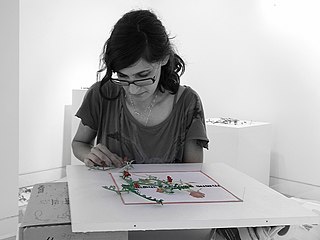
Dafna Kaffeman is an artist and a senior lecturer at the Bezalel Academy of Arts and Design. She works with glass and various materials and techniques such as embroidery, print ,drawing, to produce what the David Owsley Museum of Art describes as "beautiful crafted surfaces and disturbing text about aggressors and victims". She lives and works in Israel. Her work has appeared in solo and group exhibitions, and she has won, or been nominated for, a number of international prizes and awards.
